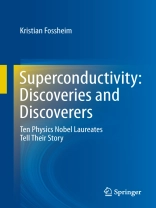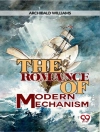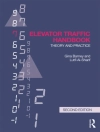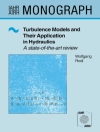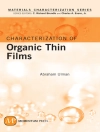This book is about the work of 10 great scientists; who they were and are, their personal background and how they achieved their outstanding results and took their prominent place in science history. We follow one of physics and science history’s most enigmatic phenomena, superconductivity, through 100 years, from its discovery in 1911 to the present, not as a history book in the usual sense, but through close ups of the leading characters and their role in that story, the Nobel laureates, who were still among us in the years 2001-2004 when the main round of interviews was carried out. Since then two of them already passed away. For each one of the 10 laureates, the author tells their story by direct quotation from interviews in their own words. Each chapter treats one laureate. The author first gives a brief account of the laureates’ scientific background and main contribution. Then each laureate tells his own story in his own words. This book is unique in its approach to science history.
Inhoudsopgave
The Ginzburg-Landau Theory of Superconductivity.- Magnetic Structure of Type II Superconductors.- The Microscopic Theory of Superconductivity.- The Microscopic Theory of Superconductivity.- Single Particle Tunnelling: Confirming the BCS-Theory.- Cooper Pair Tunnelling: The Josephson Effects.- Superconductivity from a Broader Perspective.- The Orsay Group on Superconductivity.- Discovery of Cuprate Superconductors.- Discovery of Cuprate Superconductors.
Over de auteur
The author is a condensed matter physicist educated at University of Oslo. After receiving his Master degree in 1964 he spent two years as a NATO Research Fellow and then a research associate at University of Maryland 1965-67. He then held a fellowship from the Research Council of Norway at University of Oslo and finished his Ph D there in 1972. He joined The Norwegian Institute of Technology, University of Trondheim in 1970, since 1972 as an associate professor, and since 1980 as full professor of physics. Since 1996 the university is named The Norwegian University of Science and Technology. The author is presently professor emeritus there.
Kristian Fossheim has spent several years at leading international laboratories in Europe, in the USA and in Japan. In 1973 and 1975 he spent 3 months as a visiting scientist at IBM Research Laboratory, Rüschlikon near Zurich, after which he spent the year 1975-76 at the IBM Thomas J Watson Research Laboratory in Yorktown Heights, NY, in ateam studying echo and memory phenomena in powder substances . Later, he spent a brief period as a visiting professor at the Electrotechnical Laboratory in Tsukuba and the Superconductivity Research Laboratory in Tokyo in 1990, and then two years at The National High Magnetic Field Laboratory, Tallahassee, Florida in 1994-95 and in 2000-2001.
The author started his research in superconductivity using ultrasound at Maryland already in 1965, in particular studying the phase transition with sub-millidegree resolution. Since 1968, while in Oslo and in Trondheim, he initiated and continued a collaboration with Alex Müller on structural phase transitions and critical phenomena in perovskites, specially Sr Ti O3. With R Holt he developed ultrasonic phase conjugation as a tool in the study of critical phenomena. He worked on acoustic surface waves, developed an acoustic microscope, and high resolution specific heat instrumentation. With the latter he did the experimental discovery of the crossover exponent of the structural phase transition in Sr Ti O3 with S. Stokka. The collaboration with Müller was renewed and extended to include Georg Bednorz in 1987, after the discovery of cuprate superconductors by these scientist who were to share the Nobel Prize that same year. Fossheim worked specially on the elastic and magnetic properties of superconductors. He has led 15 students to their Ph D.
Kristian Fossheim is presently the President of The Royal Norwegian Society of Sciences and Letters, Norways oldest academic institution, founded in 1760, where he led the 250 year celebrations in 2010. He is well known in Norway for science writing and for his participation in public debates on science and education, and held a number of elected functions in academia, including President of the Research Academy of University of Trondheim, chairman of the Physics Department, Vice President of the Council of Natural Science of the former Norwegian Research Council, participation in several international research programmes etc . In 2004 he published a well known textbook on superconductivity at Wiley & Sons with his colleague Asle Sudbø. During his entire career Fossheim has taught solid state and condensed matter physics, and general physics courses at all levels at the university.üller was renewed and extended to include Georg Bednorz in 1987, after the discovery of cuprate superconductors by these scientist who were to share the Nobel Prize that same year. Fossheim worked specially on the elastic and magnetic properties of superconductors. He has led 15 students to their Ph D.
Kristian Fossheim is presently the President of The Royal Norwegian Society of Sciences and Letters, Norways oldest academic institution, founded in 1760, where he led the 250 year celebrations in 2010. He is well known in Norway for science writing and for his participation in public debates on science and education, and held a number of elected functions in academia, including President of the Research Academy of University of Trondheim, chairman of the Physics Department, Vice President of the Council of Natural Science of the former Norwegian Research Council, participation in several international research programmes etc . In 2004 he published a well known textbook on superconductivity at Wiley & Sons with his colleague Asle Sudbø. During his entire career Fossheim has taught solid state and condensed matter physics, and general physics courses at all levels at the university.
